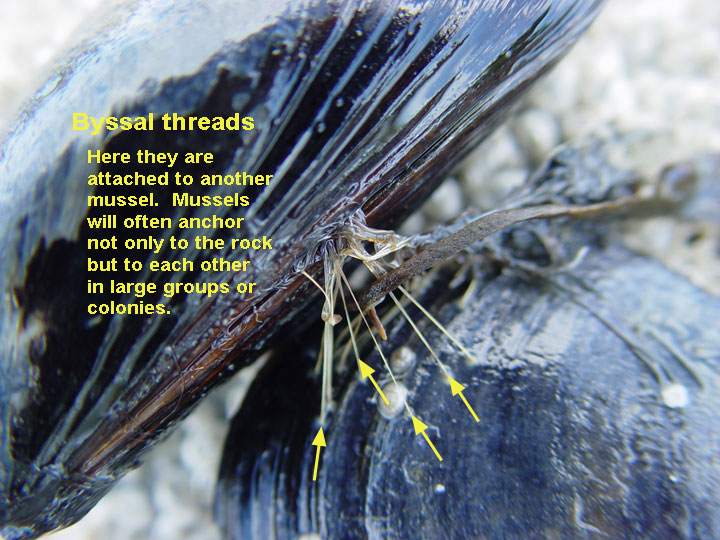upper intertidal zone mussels Biology Diagrams In the intertidal zone, the food chain begins with phytoplankton, microorganisms that use photosynthesis to create energy from the sun. These are usually consumed by zooplankton, which in turn is eaten by mussels, barnacles or other invertebrate. Barnacles are usually eaten by whelks, a type of snail that in turn is preyed upon by sea stars.

Their gills provide the mussels with oxygen and help them capture food. When the tide is in, they open just enough to filter the seawater for tiny floating plants and animals. As one of the most abundant animals in the intertidal zone, mussels are also a key food source for others in the food chain.

Community College of Baltimore County Biology Diagrams
What is the food chain in the intertidal zone? In the intertidal zone, the food chain begins with phytoplankton, microorganisms that use photosynthesis to create energy from the sun. These are usually consumed by zooplankton, which in turn is eaten by mussels, barnacles or other invertebrate. What do crabs eat in the intertidal zone? 11.7 Rocky Intertidal Zones. 80. 11.8 Sandy / Mudflat. 81. 11.9 Antarctic Ecosystems. XII. Chapter 12: Marine Resources and Pollution. A food chain follows one path of energy and materials between species. A food web is more complex and is a whole system of connected food chains. A cross-sectional diagram of Mytilus californianus mussel intertidal zone environment. TO introduce the biology and ecology Of the inter- tidal zone. TO examine organisms' special adaptations needed for existence on a rocky shoreline. To investigate life cycles and food chains where land and sea merge. To recognize that people are part of the tidal food chain

First Chain Second Chain 1. lobsters eat clams 1. birds eat crabs 2.

PDF Intertidal Zones Biology Diagrams
These mussels are found in quiet, sheltered areas in the mid-intertidal to subtidal water to 40 meters (132 feet) deep. Mussels produce sticky threads called byssus, that attach to rock substrates. Mussels are filter feed-ers and eat plankton. Although they are called blue mussels, they also vary in color from tan to brown as shown here. This is life in the intertidal zone. The intertidal zone is the area on a shoreline between the high and low tides, and it offers an abundance of nourishment for marine life. Nutrients washed down from the land and gases churned by the waves feed algae and plankton, which form the base of the intricate intertidal food web. But intertidal life
